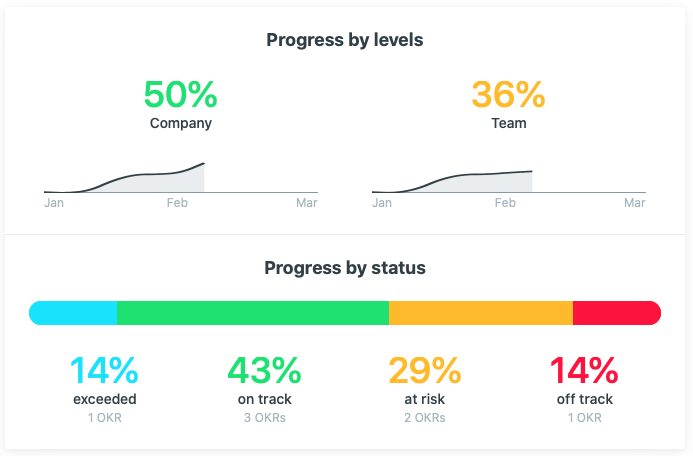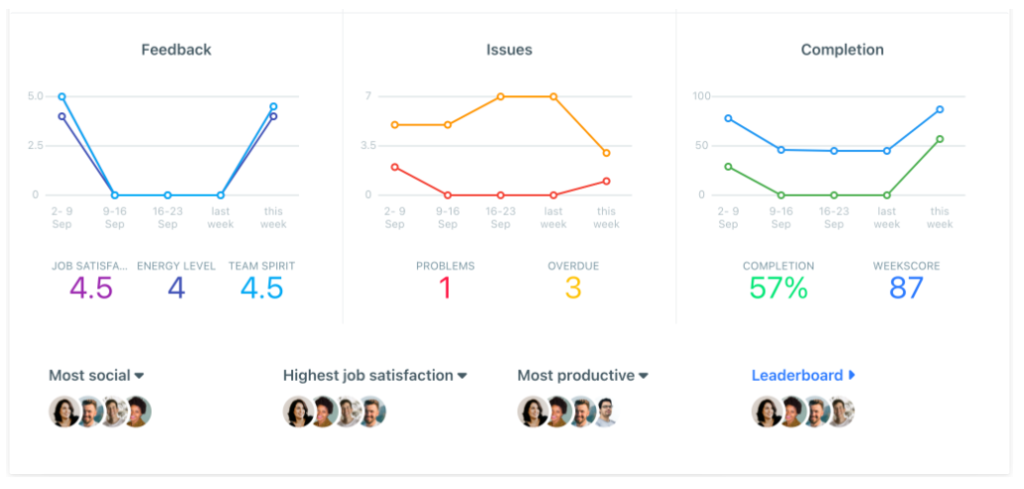Recently, I conducted over 30 in depth interviews with our OKR clients. And the #1 pattern that emerged was that about 75% of companies were using spreadsheets before they gave up and switched to an automated tool for their OKRs.
So, if you are thinking about implementing OKRs, you should seriously consider if spreadsheets is the right OKR solution for you. You might end up wasting your precious time.
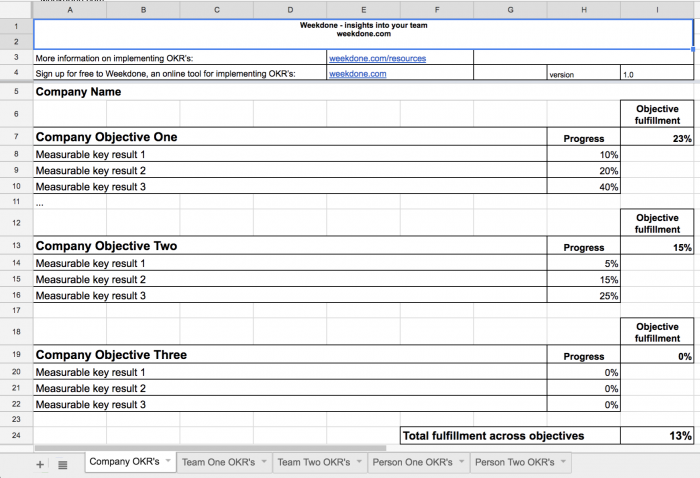
Here is what some of them had to say about implementing OKRs in spreadsheets:
- “Google spreadsheets were hard to use, hard to manage and people were checking it only at the end of the quarter”;
- “Google sheets were too complex for OKRs”;
- “It was hard to update and hard to follow”;
- “We stopped using spreadsheets as often as I would’ve liked”;
- “People were not engaged with the system and did not update their OKRs”;
- “The central problem with spreadsheets were that it was a time consuming process that was difficult to manage and keep track of”.
Check out some OKR case studies here.
The problem with OKR spreadsheets
Don’t get me wrong, spreadsheets are a great tool for getting started and organizing your personal OKRs, but the number one problem with spreadsheets is implementation. Companies start using OKRs in order to get people engaged with their goals. In order to that, you need to make it as easy and comfortable as possible.
One of our clients, Kaspar – CEO of Humanitec AG, illustrated the point very well: “It is sometimes difficult to convince people to use OKRs, so you want a solution that is extremely simple, intuitive and excellent to understand. Otherwise, people feel overwhelmed and face the daunting task of using yet another tool”.
Let’s be honest, the main reason why people start OKRs on spreadsheets is because it is free. While it is nice to see if OKRs are a good fit for your company, cheaper isn’t always better. Moreover, most OKR software offer free trials anyway. If you are not convinced yet, here are the top 6 benefits people have pointed out about using an OKR software instead of spreadsheets.
1. You don’t have to manually set up an OKR template
With an OKR software you would have a pre-filled out template, where you can easily insert your objectives and 3-4 key results. In addition, you can add a custom measurement unit to any key result. Whether it is a percentage, numerical value or even currency.
2. Easy to follow and update OKR progress
That is one of the biggest pain points that get in the way of successful OKR implementation with spreadsheets. With an OKR tool you can update your OKR progress with one click. The system will instantly update the status of your OKRs. And if you link OKRs to other levels, it will also change the progress of other OKRs.
Also, the changes made are instantly visible to everybody else. With a tool like Weekdone, everybody will get a notification in their newsfeed or OKR timeline and see that somebody made progress on their goals. With spreadsheets, it is harder to update your goals and the changes are not as easily seen as in an automated tool.
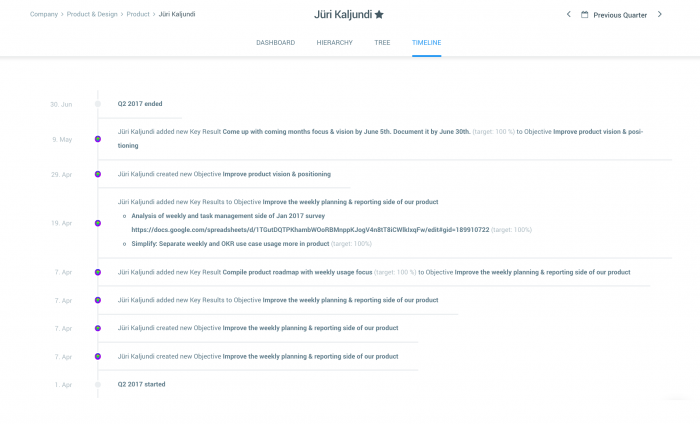
3. Visual dashboard where you can see how your OKRs are progressing
In addition, you will have your personal dashboard where you can see if your OKRs are on track. Or if they a re off track, at risk, or you have exceeded your expectations. The same view is available for the Company, where you can see how you have progressed as an entire company. Also, see the team and personal progress. The view has graphs, so the information can be instantly attainable.
On the basis of everybody’s progress, you can make better decisions. Maybe somebody needs help with their OKRs, maybe some of the people need a 1:1 conversation etc. Unfortunately with spreadsheets, this high level visibility doesn’t exist. And you need to sort through individual OKRs to see if they are on track.
4. You can comment and provide feedback on an specific Objective and Key Result
As mentioned in the previous point, it is great to have an overview how people are progressing with their OKRs. In an OKR tool, you can comment on a single Objective and an individual Key Result. You are able to provide feedback and offer advice to your team members.
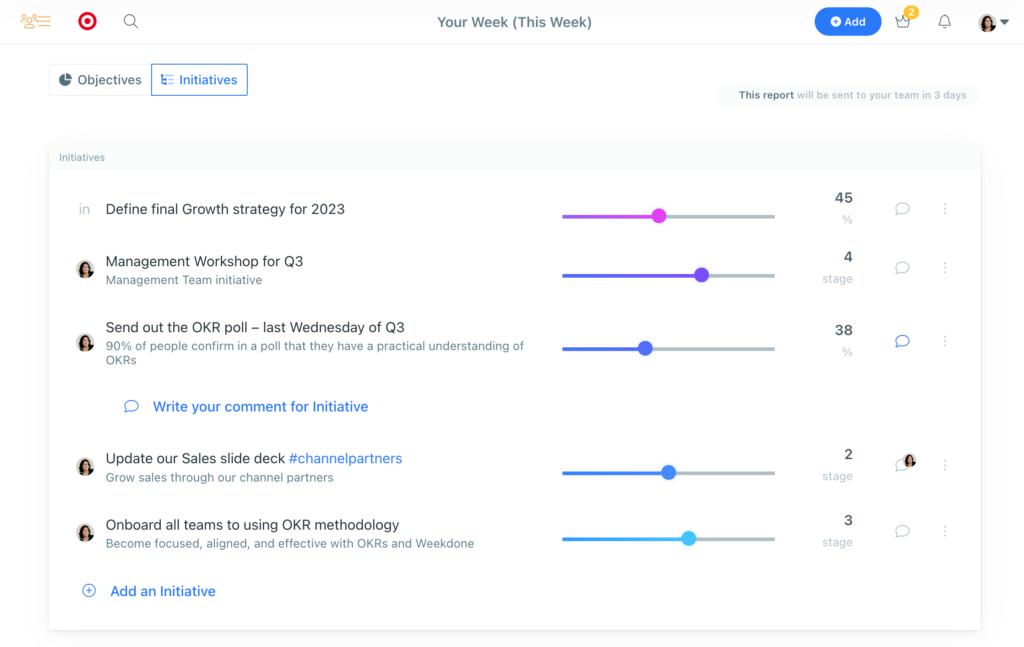
5. You have OKR experts helping you out
With an OKR tool you will also receive 24h customer support from our OKR experts. Also, get educational OKR materials and OKR videos.
Moving from spreadsheets to automated OKRs
OKRs are meant to align and engage people, but if this process is not made comfortable enough, there is a big chance that you won’t be able to reap the full benefits of OKRs. For a successful implementation you need to create a habit of using OKRs regularly.
Therefore, I urge you to evaluate your current situation with OKRs. Whether you are starting off or are already using them in spreadsheets, and see if people would actually use it.
As I said, spreadsheets are great for getting started and kind of practicing OKRs on your own. In case you are looking to do that, we have a free OKR Google spreadsheet and Google docs template for you.
In case, you are serious about implementing OKRs with your team, I would recommend to use a tool that takes away the pain of clunky spreadsheets and implement an automated OKR software, so you could start making real progress towards your team or company goals. Test it out for free here.
Best Materials About OKRs
Below are all OKR related materials you might need to get started and also a guide how to move your OKRs from spreadsheets to automated OKRs:
- Step by step guide: From Spreadsheets to Automated OKRs: Transitioning OKR Platforms;
- Step by Step Guide to OKRS (ebook);
- Employee Guide to Getting Started with OKRs;
- OKR examples by job positions;
- OKR templates and examples;
- Weekdone Academy resources page with OKR examples and OKR templates;
- How Google sets goals with OKR’s;
- Top 10 Questions Managers Have About OKR Goal Setting (Examples and Templates);
- OKR FAQ – Everything you’ve ever wanted to know about Objectives and Key Results;
